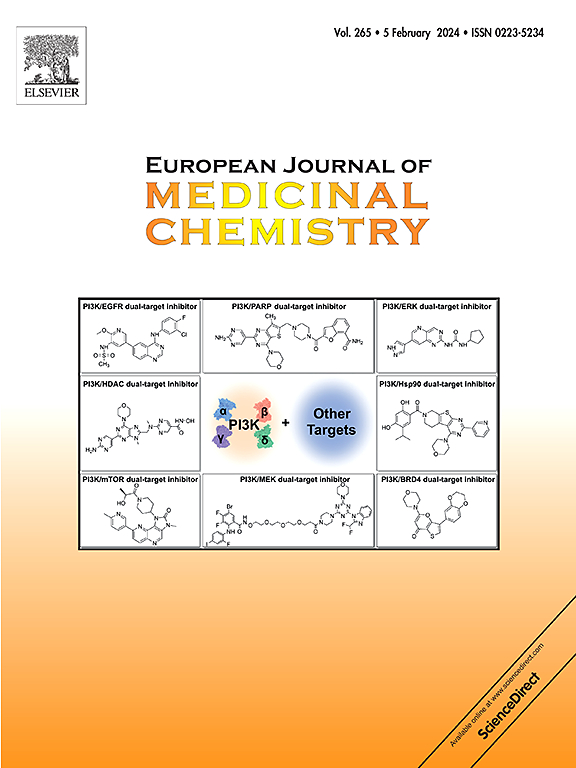Proof of concept study for developing 1-thienyl-β-carboline derivatives as IDO1 and TDO dual inhibitors to treat Parkinson's disease complicating depression
IF 6
2区 医学
Q1 CHEMISTRY, MEDICINAL
引用次数: 0
Abstract
Depressive symptoms are the most common neuropsychiatric disorders at all stages of Parkinson’s disease (PD). Imbalances of the kynurenine pathway of tryptophan metabolism have been closely linked to the pathogenesis of PD and depression. Herein, we designed and synthesized a series of 1-thienyl-β-carboline derivatives as IDO1 and TDO dual inhibitors; among them, compound CZ-17 manifested moderate inhibitory activities to IDO1 and TDO with IC50 values of 0.33 and 1.78 μM, respectively. CZ-17 inhibited the kynurenine pathway of tryptophan degradation at the cellular level, and remarkably reduced the kynurenine/tryptophan ratio. CZ-17 displayed directly neuroprotective effect in corticosterone-induced PC12 neural cell injury model. In vivo experiments demonstrated that CZ-17 significantly increased dopamine and serotonin levels, improved MPTP-induced motor disability and rescued LPS-induced depressive behavior in zebrafish model. Acute toxicity tests of CZ-17 in zebrafish embryos showed no toxicity within the effective dose range. Additionally, CZ-17 displayed the potential to cross the BBB via passive diffusion according to ADMET prediction and Caco-2 permeability assay. Thus, CZ-17 may be a promising drug candidate for PD complicating depression.

求助全文
约1分钟内获得全文
求助全文
来源期刊
CiteScore
11.70
自引率
9.00%
发文量
863
审稿时长
29 days
期刊介绍:
The European Journal of Medicinal Chemistry is a global journal that publishes studies on all aspects of medicinal chemistry. It provides a medium for publication of original papers and also welcomes critical review papers.
A typical paper would report on the organic synthesis, characterization and pharmacological evaluation of compounds. Other topics of interest are drug design, QSAR, molecular modeling, drug-receptor interactions, molecular aspects of drug metabolism, prodrug synthesis and drug targeting. The journal expects manuscripts to present the rational for a study, provide insight into the design of compounds or understanding of mechanism, or clarify the targets.

 求助内容:
求助内容: 应助结果提醒方式:
应助结果提醒方式:


